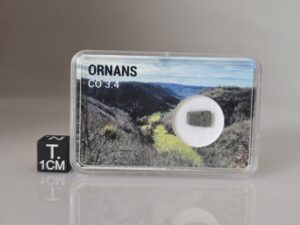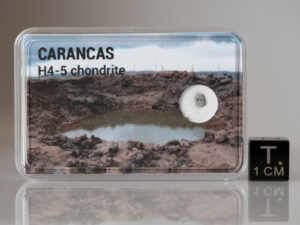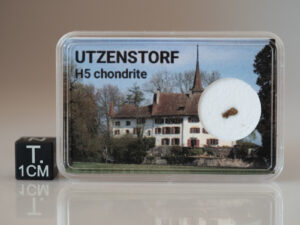Description
Extremely rare meteorite from Switzerland.
On 16 August, 1928 at 7 p.m. local time a bright fireball travelling east to west and “about the size of the Moon” was seen by a number of witnesses in the area of the town of Utzenstorf, canton Bern, Switzerland. The fireball was visible for about four seconds and was accompanied by five or six detonations in rapid succession. Eleven days later, on the farm Stigli (lat. 47° 7′ N., long. 7° 33′ E.), a farmworker discovered three interlocking fragments of black crusted stone totalling 3422 grams in a hole approximately 25 cm deep. Some soil was adhering to the fragments which were washed clean under running water.
On 17 September, after reading a report of the fall in a local paper, Ernst Scheidegger, a teacher in Bern, travelled to Utzenstorf and returned the same day with the largest fragment of 2764 grams. He deposited it at the Naturhistorisches Museum where it was recognised as a meteorite (from Gekber, 1929 and Hey, 1966).
When fitted together the three fragments formed an incompletely crusted, orientated individual approximately 22 cm x 14 cm X 8 cm which had broken on impact. Some small fragments had obviously become detached during atmospheric flight but these were not found.





